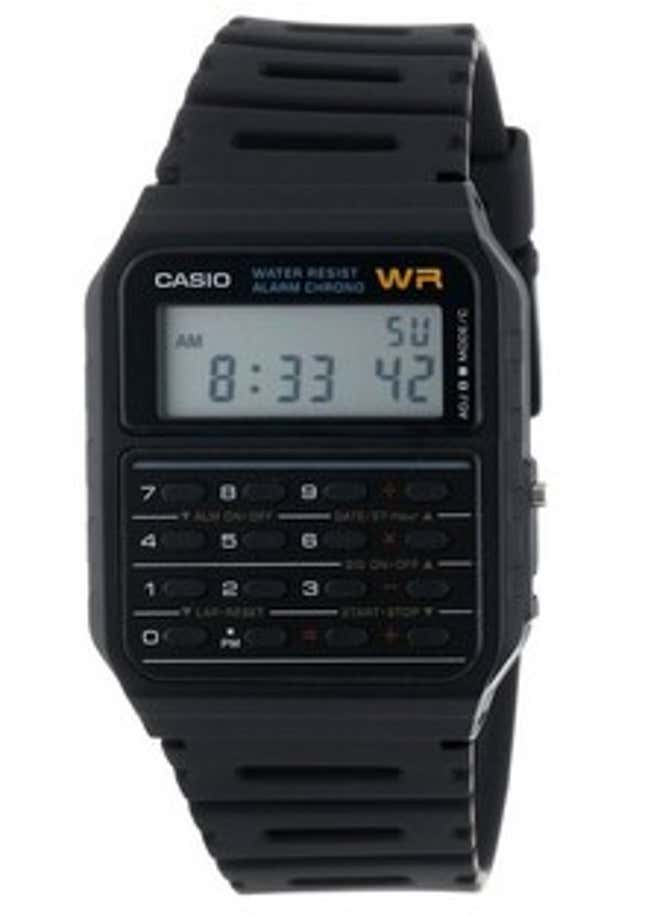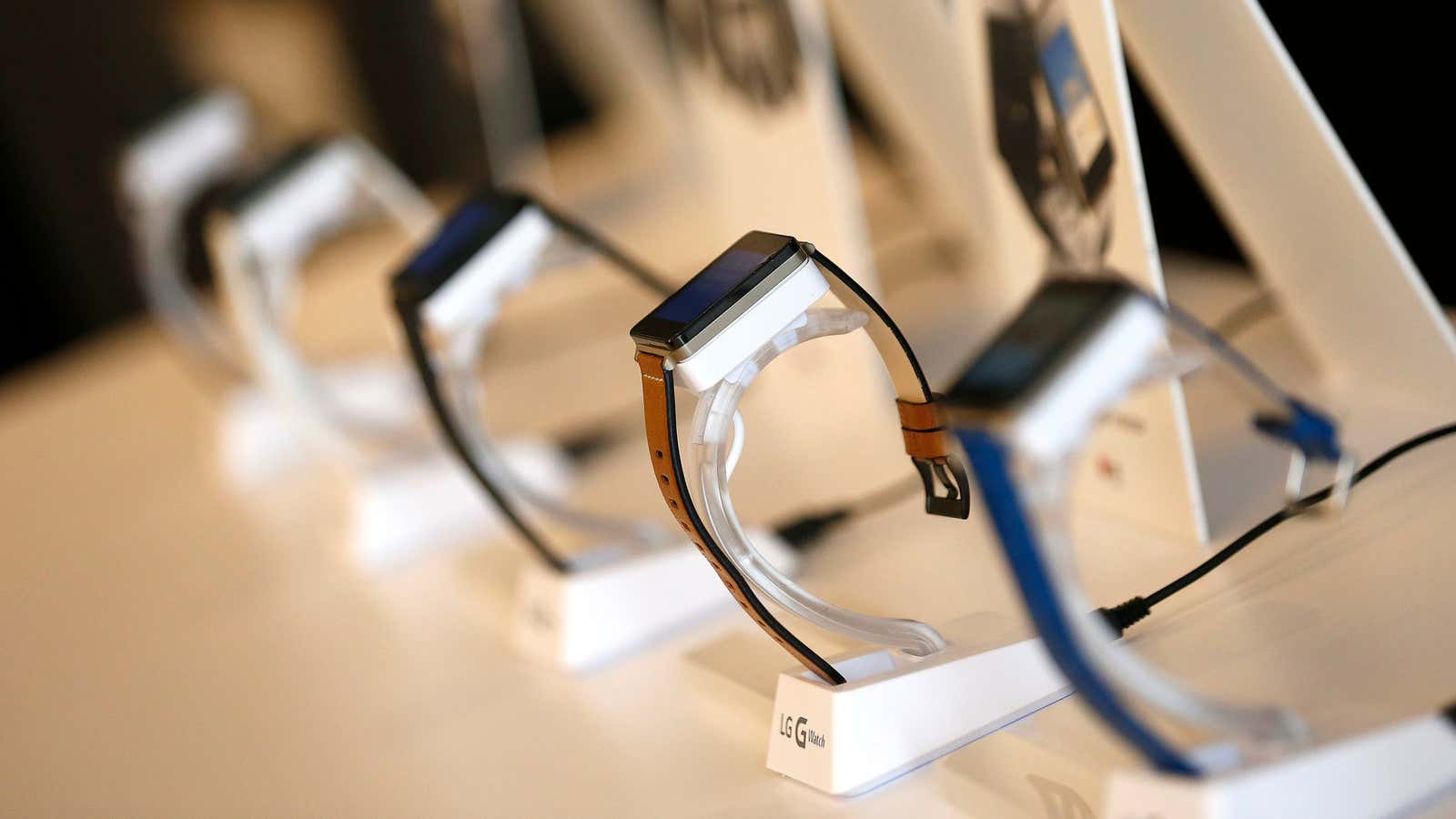Google presented its vision for smartwatches—one of the first waves of wearable computers—this week at its I/O conference in San Francisco. It was…mildly inspiring.
“It’s finally possible to make a powerful computer small enough to wear comfortably on your body all day long,” Google engineering director David Singleton said, kicking off a 15-minute session. “And there’s a huge opportunity to bring rich user experiences to these devices.”
Singleton and a colleague then showed a variety of functions on a demo watch, ranging from reading text messages and acting as a caller ID to accessing travel information and ordering a pizza. The demos—a lot of swiping between simple ”card” screens, and “typing” via voice commands—gave little reason to believe an Android-driven smartwatch revolution is imminent.
What’s this thing for?
While it’s impressive how small today’s computers can get, Google and its partners have still failed to demonstrate truly compelling use cases—let alone ”rich user experiences”—that will create a mass market for $200+ smartwatches. In almost every example during Singleton’s presentation, simply accessing a smartphone—an activity Google says its one billion Android users already do an average of 125 times a day—seems like it would be a more capable and comfortable solution. (And there’s no either/or option here—today’s smartwatches must be paired to a phone in the vicinity to access the internet.)
Never mind the watches themselves, which seem awkwardly large, must be charged daily, don’t handle sunlight very well, and simply aren’t cool. Former New York Times design director Khoi Vinh sums this up well:
When technology companies look at goods that are built from the outside in, they generally see irrationality and inefficiency, a broken market just waiting to be corrected and “disrupted.” They believe that they can engineer so much value into these items that people will be swayed to buy goods built from the inside out, that the promise that drives hardware and software—“adopt this and benefit from its utility”—will convince people to upend their sartorial habits. This is how you get products like Google Glass, which assumes that consumers prize utility so much that they’re willing to look like they have no interest whatsoever in having intimate relations with another human being.
I’m kind of joking about that, but I’m kind of not joking too.
Prepping for the iWatch

With recent reports that Apple will unveil its own smartwatch-like gizmo this year, I’ve started wearing a watch again—after more than a decade without one—to get a fresh feeling for it. My “smartwatch” of choice is the Casio CA53W, a $15 calculator watch that looks like the same model I wore in grade school 20 years ago. (Actually, it might be.) With the exception of a few days I’ve forgotten it at home, I’ve tried using it every day.
My experience so far: It’s actually nice to be able to glance at the time without taking out my phone—who knew! Typing all day with a slim band on your wrist isn’t so bad after all—more comfortable than the Nike Fuelband, which I abandoned after a few weeks. I sometimes wish this watch had a Twitter feed, though it’s probably easier to just pull out my iPhone for that. And trying to calculate a tip on this watch in a dark restaurant, sans Indiglo, was a non-starter. But I’m actually intrigued about a computer on my wrist.
Perhaps the best news for any of this is that software developers around the world will now have access to the tools to potentially invent actually-useful features for these devices. I can imagine little delights here and there—getting a Dark Sky alert a few minutes before rain, or seeing Foursquare tips from friends at new restaurants—when my phone is put away. It could be neat if my watch could direct me to the nearest Citi Bike station with free docks as I approach the office, or at least alert me if my usual station is full. It might also be handy to glance at the Quartz ChartBeat internet traffic stats during a meeting without looking distracted.
These are admittedly niche activities, but perhaps enough of these little applications could eventually create a large-enough market to justify investment. Or maybe there will be a comically simple, Flappy-Bird-like game that gets everyone to buy one. Or better yet, comically simple tools for creating your own smartwatch widgets.
So perhaps Google is on the right track, and we’ll all be using smartwatches someday. But we’re not there yet—not in the software, hardware, design, or ecosystem. And Apple is going to have to do better than this if it expects the fabled iWatch to dominate.
